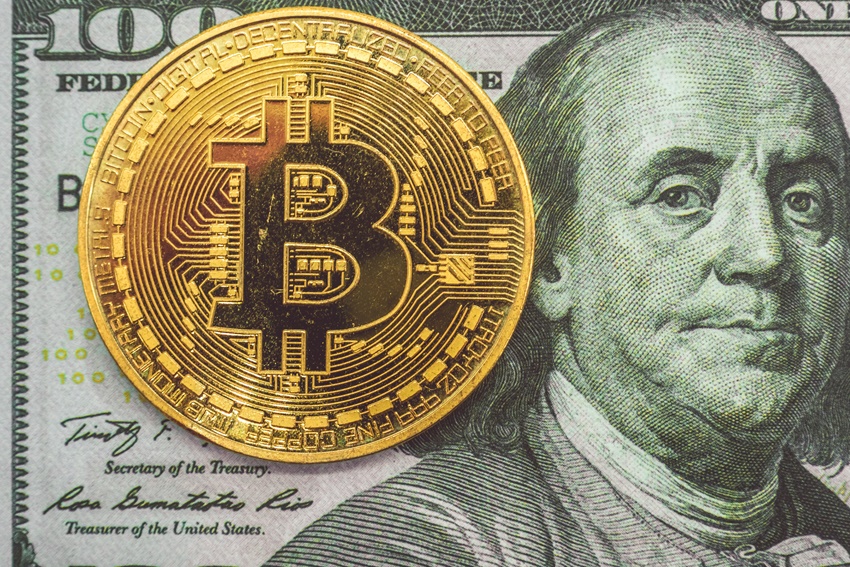Crypto is a hot topic today. Anyone who’s anyone has probably heard of Bitcoin or Ethereum or some other cryptocurrency claiming to be the future of financial transactions; maybe you even have a few coins yourself. The past year was a great year for cryptocurrency as most financial transactions went paperless, and printed money was generally not used. People stayed at home and bought things online and paid with their financial processors. The stock market was busier than ever.
Governments had to inject trillions of dollars into their economies to save whatever was left of their industries and give the people stimulus to afford basic needs. With more money supposedly being printed and distributed into circulation, people and investors were looking for ways to stay wealthy by owning assets with a limited supply like stocks and cryptocurrency.
The stock market recorded massive gains, and Bitcoin, one of the largest cryptocurrencies, had grown a record 200% by year’s end. This was primarily due to the scare that inflation would ruin national currencies and Crypto would take over as a monetary replacement. Most people believed this because no central authority could influence its supply and drive it to inflation.
Where it began
Inflation is loosely defined as an increase in prices over a given time. It also implies a change in the money supply or the amount of money in circulation. Where Crypto is concerned, inflation is used to account for the money supply, whether it is lower than expected or a lot more than needed.
Bitcoin, and other Crypto, are advertised as an inflation-proof store of value. Since their supply is infinite or limited depending on their design & technology, no authority can manipulate it and influence supply. The narrative is that Bitcoin, for example, has only 21 million coins available for mining. This means that its value will increase over time as the supply dwindles. As dollar prices and exchange rates for other currencies fluctuate, you can grow your wealth and make a lot more money when you sell off your coins.
Bloom and doom
When it comes to Crypto, timing is king; knowing when to buy and sell is an essential skill or instinct you need to master. CPI is used as a measure of inflation in the US. Before the pandemic, the CPI was a comfortable 2.4%, and no one had reason to panic. Around that same time, Bitcoin was closing at $3,700. Then came the pandemic, and the CPI plunged into the 1% zone and even lower before it rebounded in September. Within the same time, Bitcoin had leaped from $3,700 to $11,000, and by February 2021, Bitcoin was cruising at $47,000.
By April, when the CPI had hit 4.2% and nearing 5%, Bitcoin was at $65,000 and climbing. The inflation scare was real, and Bitcoin miners were getting richer by the minute. But overnight, the tide reversed, and the prices started falling. Bitcoin dropped by 50% to almost $30,000 by Mid-July, and it has never been the same since.
For an asset to be considered an inflation hedge, its stability during inflationary times should be reliable. If someone had invested in Bitcoin earlier on when the price was $3,700, they would have become wealthier by July or August 2021 if they sold it at the current price of $46,000. But they also would have lost about $25,000 or more in the process. If you consider CPI, then Bitcoin, and by extension Crypto, fails the inflation hedge test.
The reality of Crypto during inflation
Currently, the promise that Bitcoin and other digital tokens would be immune from outrageous price hikes doesn’t hold. They have lost more than a quarter of their gained value since the mild inflation hit. However, much of the price changes could be attributed to people swaying to the tide of headlines and what they think is the future of money. Bitcoin is on its own trajectory; it can rise or fall regardless of where inflation is, its rhythm is unpredictable.
Currently, the oldest cryptocurrency is Bitcoin, followed closely by other coins that have sprung up in the 2010s. Their history is too short, and the economic times experienced over the last decade pale in comparison to the depth of research available on how other inflation hedges have performed over several decades past. And throughout history, gold too, which Bitcoin and other cryptos are compared to when it comes to hedging, has had its share of bad runs.
The value of Crypto is driven by speculative forces, making it more volatile than stocks and bonds. If people today decide that Crypto is a bad bet and choose to sell all of it, the value will swing wildly, and in a matter of hours, you’d go bankrupt or be stuck with coins of low value. If a recession happened due to inflation, most investors would, historically, choose safer, more stable assets which don’t include cryptocurrency.
Passing craze or lasting wealth?
Digital tokens tie their value to the willingness of other investors to hold them. As more people soften up to the idea of widespread inflation due to money printing, they are more likely to hold Crypto just in case their paper money loses its value. But what if it doesn’t? The Fed doesn’t tweak the supply of money by simply printing more bills. Several measures like money acceleration are considered when the money supply is calculated.
Inflation could be soaring, maybe because people are more cautious of spending money and more open to saving it instead, or even an aging population and the influx of technology. Price pressures currently are a product of the base effects of an economy waking up and rebooting supply worldwide to meet demands.
Crypto derives its massive value from the wealth of popularity that influences speculative interest in it and its controlled supply and, more recently, its acceptance as a means of exchange in some economies. With a little over 2 million Bitcoin left to be mined of the total 21 million, its value could skyrocket as the supply withers.
The bottom line
The catch with investing in Bitcoin and other digital coins is that their market is unregulated. There are no predesigned frameworks to manage trades, and the creators make the rules as they go along and improve the functionality of the coin wallets and mining platforms. Mining cryptocurrency is another challenging exercise. You need enough processing power and hardware to mine it, an endeavor that could prove hard with energy prices soaring and semiconductor shortages.
When value charts between cryptocurrency and the US dollar or even gold are analyzed side-by-side regarding being a safe store of value, the difference is clear. Any good store of value, especially during inflation, wouldn’t lose over 20% of its value over a week. But the future of Bitcoin and cryptocurrency requires it to be widely adopted by more than the tech-savvy 30% of the world’s population; there’s still a long way to go.
But inflation doesn’t wait for anyone to catch up. The current price actions would make cryptocurrency an “avoid it if you can but get it if you must” hedge against inflation. There’s still a need to study its performance during higher inflation, stagflation, and deflation. But while you’re at it, get a few coins and add them to your portfolio to be on the safe side when the time comes that they blow up in value and stay up. That said, don’t buy more than you can afford to lose and don’t obsess about the gains and drops. Read more about crypto, Is Crypto a Bubble.
This post was written with by Willy Wallace on Fiverr. I partner with Fiverr writers who are specialists in the topics they write about. These writers provide real world details to help you make better decisions. Neither of us are financial advisors, he’s an economist and I’m a sales gal, the best help for making financial plans is working with a financial planner and doing your own research before investing.
Subscribe for more business, sales and investing posts. Have a lovely day.











